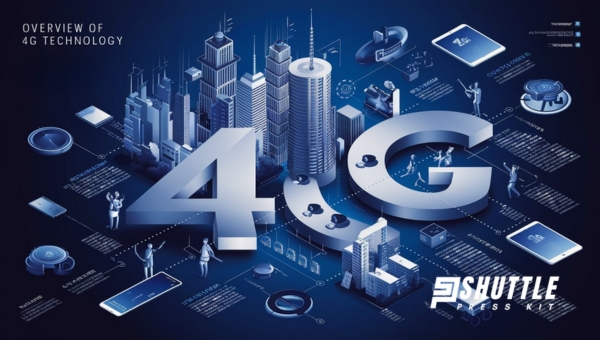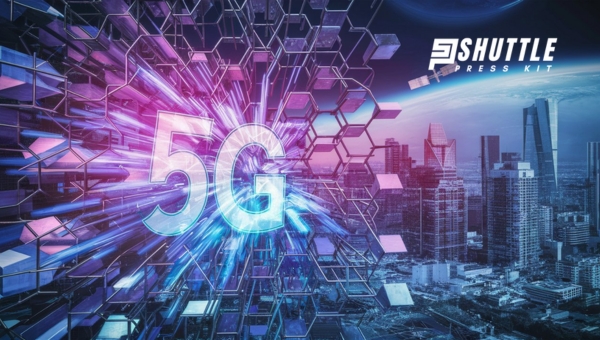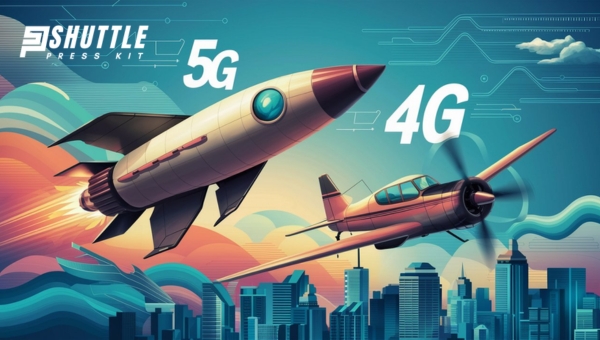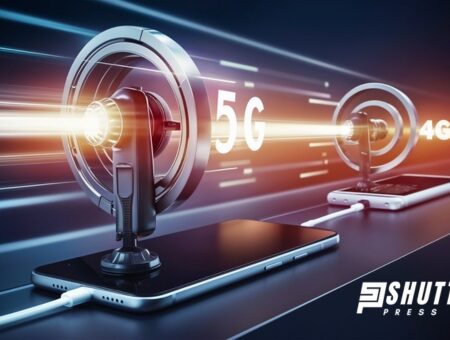Have you ever wondered about the differences between 5G vs 4G? With all the buzz around these technologies, it’s easy to feel a bit lost. Let me break it down for you in simple terms. Both are types of mobile networks, but they offer different speeds and capabilities. This difference can impact your everyday life in many ways.
Imagine downloading a movie in seconds or having a seamless video call without any lag—that’s what 5G promises over 4G. But is it really worth making the switch? Stick around as I dive deep into this fascinating topic to help you make an informed decision!
Overview of 4G Technology
Although 4G technology has revolutionized mobile internet access, it’s primarily based on Long Term Evolution (LTE), delivering maximum download speeds of up to 1 Gbps. This advancement has greatly enhanced your experience on mobile devices, ensuring faster data transmission and seamless connectivity.

When discussing 4G technology, it’s essential to take into account latency, which typically ranges between 30 to 50 milliseconds. This low latency enables quick response times for applications like video streaming and online gaming, making your interactions smoother.
Operating on frequency bands below 6 GHz, 4G technology provides broader coverage areas. However, this comes with a trade-off in network capacity, especially in densely populated urban environments where high-density connections are required. The network can support around 100,000 devices per square kilometer, which, while impressive, has its limitations compared to future technologies.
Key technologies such as Multiple Input Multiple Output (MIMO) and Orthogonal Frequency Division Multiplexing (OFDM) are integral to 4G. MIMO improves data throughput by using multiple antennas, while OFDM enhances efficiency by dividing the spectrum into orthogonal frequency bands.
Thus, 4G technology, with its impressive download speeds and relatively low latency, brings considerable improvements to mobile internet access, though it faces challenges in high-density environments.
Overview of 5G Technology
While 4G technology has set a high standard for mobile internet, 5G technology propels connectivity into a new era with its advanced capabilities. Operating on millimeter wave bands ranging from 30 GHz to 300 GHz, 5G technology greatly enhances data transmission speeds and network capacity.

You’ll experience download speeds of up to 10 Gbps, which are ten times faster than 4G’s maximum of 1 Gbps. Latency is drastically reduced to as low as 1 millisecond, enabling real-time communication essential for applications like remote surgery and autonomous driving.
In addition, 5G supports a dramatic increase in device connectivity, accommodating up to 1 million devices per square kilometer—ten times the capacity of 4G.
One of 5G’s pivotal features is network slicing. This allows for the creation of multiple virtual networks within a single physical 5G network, tailored to specific use cases and applications.
For instance, an IoT network can operate independently from a mobile broadband network, each optimized for its particular requirements.
5G vs 4G Performance Metrics Comparison
When comparing performance metrics between 5G vs 4G, the advancements are striking.

5G technology delivers download speeds up to 10 Gbps, dwarfing 4G’s peak of 1 Gbps. This increase in download speeds translates to faster data transmission and more efficient handling of high-bandwidth applications.
Latency is another vital metric where 5G excels. With latency as low as 1 millisecond, 5G technology greatly outperforms 4G’s 30 to 50 milliseconds, ensuring near-instantaneous communication. This low latency is essential for applications requiring real-time responsiveness, such as autonomous vehicles and remote surgery.
Moreover, 5G can support up to 1 million devices per square kilometer, a tenfold increase over 4G’s capacity of around 100,000 devices.
This enhanced network capacity is facilitated by wider bandwidth channels ranging from 100-800 MHz, compared to 4G’s 20 MHz channels, allowing for improved data throughput and reduced congestion.
Network Architecture
5G network architecture represents a notable evolution from 4G’s macro cell reliance, making spectrum use more efficient and adaptable. You’ll find that unlike 4G, which depends heavily on macro cells, 5G leverages a combination of small cells, massive MIMO, and beamforming technologies. This hybrid approach enables dynamic resource allocation and greatly improves coverage and capacity.
In 5G, small cells play a pivotal role, allowing the network to support up to 1 million devices per square kilometer—a stark contrast to 4G’s 100,000 devices. These small cells are densely deployed, enhancing the overall network capacity and guaranteeing consistent, high-speed connectivity.
Another key component is 5G New Radio (5G NR), which replaces the LTE framework of 4G. Utilizing higher frequency bands, ranging from 30 GHz to 300 GHz, 5G NR notably boosts data transmission capabilities and energy efficiency.
Additionally, the incorporation of beamforming technologies in 5G allows for precise signal directionality, reducing interference and optimizing link quality.
Lastly, 5G’s cloud-native infrastructure supports faster deployment of services and applications, offering a level of flexibility and scalability unmatched by the more rigid architecture of 4G networks. This guarantees that 5G stays ahead in the rapidly evolving landscape of mobile network technology.
Deployment Strategies
Ever wondered how the latest mobile networks achieve such remarkable speeds and connectivity? The deployment strategies for 5G revolve around advanced technologies like small cells, massive MIMO, and beamforming, especially in urban areas where demand surges.
Unlike 4G, which relied on macro cell towers, 5G’s deployment strategy incorporates a dense network of small cell base stations, essential for supporting high-frequency mmWave signals.
To implement 5G, substantial investments in infrastructure are necessary. This includes the installation of numerous small cells, greatly increasing base station density. These small cells enable 5G to support up to 1 million devices per square kilometer, a massive leap from 4G capabilities.
- Increased Device Connectivity: Imagine a world where up to 1 million devices connect seamlessly per square kilometer.
- Faster Speeds: Experience unprecedented download and upload speeds, transforming your digital life.
- Enhanced Urban Experience: Enjoy more reliable connections in crowded urban areas.
Government policies and regulations greatly influence the pace of 5G deployment by dictating zoning for small cell installations and spectrum allocation.
Shifting from 4G to 5G also means addressing compatibility with existing networks and tackling security concerns due to the increased number of connected devices.
Applications of 4G
Innovation in mobile technology has transformed how we interact with the digital world, and 4G technology stands as a cornerstone of this evolution. With 4G, mobile browsing becomes a fluid experience, enabling you to access websites and online resources with unprecedented ease and speed.
This technology is pivotal in supporting high-definition video streaming services like Netflix and YouTube, offering seamless playback with considerably reduced buffering times.
4G technology boasts maximum download speeds of up to 1 Gbps. This capability means you can download apps and large files quickly, enhancing your overall user experience. The impressive download speeds are particularly beneficial for applications that demand high data rates, such as mobile gaming and social media platforms that rely on real-time connectivity.
Additionally, 4G supports VoIP services, allowing for clearer voice calls and more efficient communication over mobile networks. Services like Skype and WhatsApp benefit from 4G’s robust network, providing superior call quality and reliability.
The technology’s capabilities have also driven the growth of various mobile applications, making it a foundational element in the current digital landscape. Consequently, 4G technology has considerably advanced mobile browsing, video streaming, and communication functionalities, shaping modern user experiences.
Applications of 5G
Transforming modern applications, 5G technology is redefining the capabilities of mobile networks with its exceptional data transmission speeds and minimal latency.
In healthcare, 5G enables remote surgeries and telemedicine services, necessitating real-time communication and high-resolution data transfer. Surgeons can now perform intricate procedures from thousands of miles away, ensuring precision and saving lives.
Smart city initiatives benefit immensely from 5G technology by providing seamless connectivity for IoT devices. These smart devices monitor traffic, air quality, and urban infrastructure in real-time, improving overall efficiency and quality of life.
Autonomous vehicles leverage 5G’s low latency and high-speed connectivity to communicate with each other and with traffic systems, enhancing safety and navigation efficiency.
In agriculture, connected sensors utilizing 5G facilitate real-time data processing, optimizing resource usage and improving crop yields sustainably. Farmers gain actionable insights into soil health, weather conditions, and pest activity, leading to better decision-making.
Consider the impact:
- Remote surgeries that save lives across continents
- Smart cities offering a higher quality of life
- Sustainable agriculture optimizing resources
5G technology is the cornerstone of a smarter, more connected world, driving advancements across various sectors with its unparalleled capabilities.
Economic Impact
With its transformative potential, 5G technology is poised to make a considerable economic impact globally. You’re looking at a projected contribution of over $13 trillion to the global economy by 2035, catalyzing productivity and driving innovation in pivotal sectors such as healthcare, manufacturing, and transportation.
Enhanced connectivity through 5G mobile networks will facilitate the exponential growth of the Internet of Things (IoT), potentially adding up to $4 trillion in economic value by optimizing efficiency and fostering new business models.
In the United States alone, the rollout of 5G is anticipated to generate $2.7 trillion in economic output. This considerable economic impact demands extensive investments in infrastructure and technology.
The capability of 5G technology to support advanced applications like remote surgeries and smart factories is set to revolutionize operational efficiency, leading to substantial cost savings and increased revenue potential for businesses.
The global economy stands to benefit immensely from the enhanced connectivity provided by 5G. By enabling seamless integration of IoT, 5G technology will transform industries, create millions of jobs, and considerably boost GDP across various regions, confirming its role as a critical driver of economic growth in the coming decades.
Connectivity and Device Compatibility
5G technology dramatically enhances connectivity and device compatibility, supporting up to 1 million devices per square kilometer—ten times the capacity of 4G. This capability is transformative, particularly for densely populated urban areas where device saturation often strains 4G networks.
Unlike 4G, which primarily catered to smartphones, 5G technology is designed for a diverse array of devices, including industrial robots, smartwatches, and low-power IoT devices. These advancements mean you can expect seamless connectivity across a broader spectrum of applications.
The key to this enhanced performance lies in 5G’s utilization of small cell technology, which enables superior connectivity in crowded environments compared to the larger macro cell towers used by 4G.
However, it’s essential to recognize that older devices may become obsolete with the rollout of 5G networks. You’ll need to upgrade to compatible devices to fully leverage the benefits of 5G connectivity. This shift isn’t just about speed but about enabling new forms of mobile communication and interaction.
- Stay ahead of the curve and experience unparalleled connectivity.
- Unlock the potential of IoT devices in your daily life.
- Embrace the future with cutting-edge mobile communication capabilities.
Future Innovations
The future of innovation rests heavily on the backbone of 5G technology, promising to revolutionize multiple industries through unparalleled speed and connectivity.
With 5G, augmented reality (AR) and virtual reality (VR) will offer immersive experiences with minimal latency, transforming gaming and training applications. The enhanced connectivity provided by 5G is essential for developing smart cities. Here, IoT devices will monitor urban metrics like traffic flow and air quality in real-time, enabling data-driven decision-making and efficient resource management.
In the domain of transportation, 5G’s capabilities are vital for autonomous vehicles. Rapid data sharing and communication between vehicles and infrastructure will guarantee safer, more efficient transport systems.
Agriculture will also see significant advancements. Precision farming will benefit from real-time data processing via 5G, optimizing resource usage and maximizing crop yields through soil sensors and autonomous farming equipment.
Healthcare is poised for a revolution with 5G integration. Innovations such as remote surgeries and telemedicine will become viable, delivering high-quality medical services across geographical barriers.
With 5G, the potential for breakthroughs in various sectors is immense, paving the way for a connected, efficient, and technologically advanced future.
Frequently Asked Questions
What Is the Difference Between G and 4g?
You’ll find G technology offers a thorough overview, leading to significant 4G technology advancements. When comparing G vs. 4G performance, G faces compatibility issues, while 4G’s global rollout highlights its network limitations.
Why Does My Phone Say G Instead of 4g?
Your phone displays “G” instead of “4G” due to inadequate signal strength, leading to a fallback on older 2G technology. This affects network connectivity, limiting data speeds and mobile usage. Carrier differences also impact this issue.
Is It Better to Get 4G or 5g?
It’s better to get 5G due to its advantages: faster network speed, lower latency, and higher device compatibility. While 4G has limitations in coverage area and future technology applications, 5G guarantees readiness for advanced innovations and IoT growth.
Does the G Stand for in 4g?
In the context of G technology, the “G” in 4G stands for “generation.” It signifies the fourth stage in the G evolution, focusing on enhanced G performance, G network capacity, and advanced G applications, adhering to specific G standards.
Conclusion
To sum up, you’ll find that 5G outperforms 4G in every critical metric—speed, latency, and device density. With download speeds reaching up to 10 Gbps and latency as low as 1 millisecond, 5G’s capabilities are unparalleled. Its advanced network architecture and deployment strategies enable robust applications, driving economic growth and innovation.
As we look ahead, 5G’s extensive connectivity and compatibility will pave the way for future technological advancements, revolutionizing various sectors and enhancing user experience globally.
